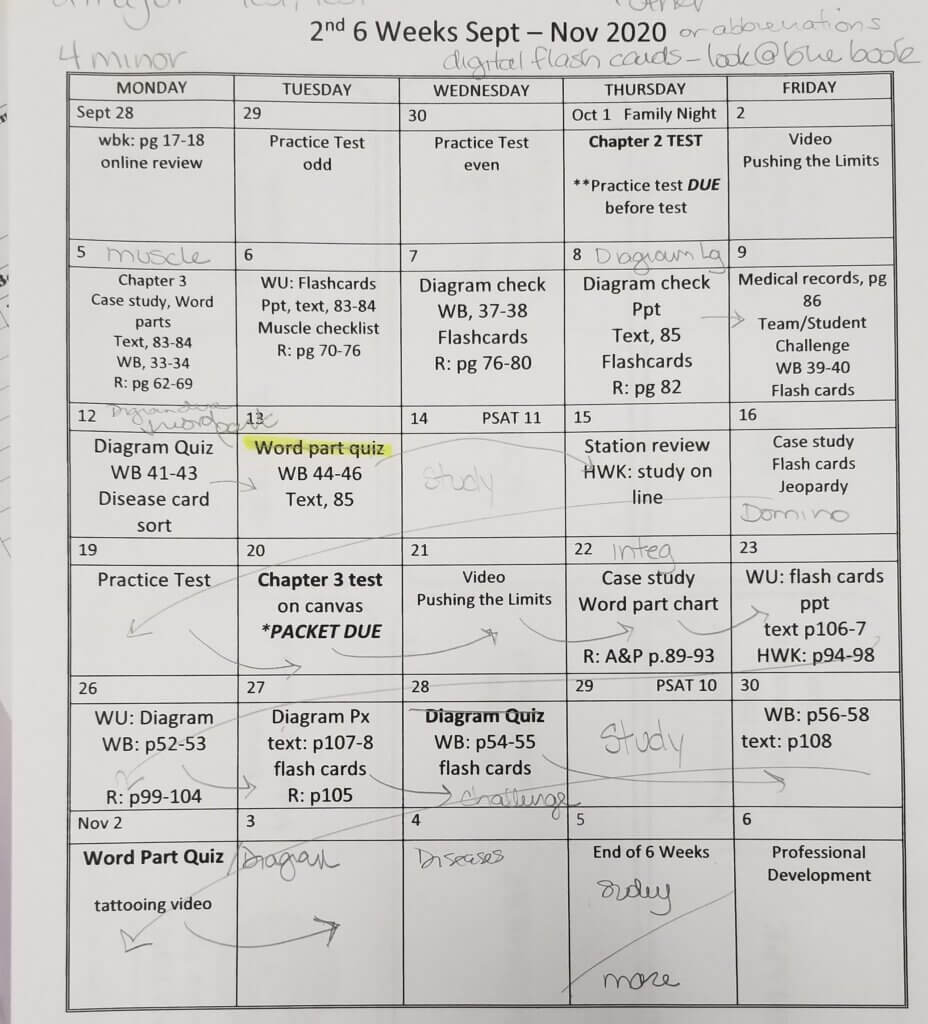
As a health science teacher, managing a busy schedule can be a frightening task. Balancing personal life, lesson planning, grading, meetings, and extracurricular activities requires effective calendar management. Here are some practical tips to help you take control of your teaching calendar and make the most of your time.
1. Prioritize and Plan Ahead
Start by identifying your top priorities. Your first priority should be you and your family, and work after that. Break down your tasks into categories: lesson planning, grading, and administrative duties. Allocate specific time slots for each category, ensuring your essential tasks are always addressed. Use a planner or digital calendar to schedule these blocks in advance.
I want you to schedule what you know you have for yourself and your family first. If you have kids that play sports, put the games on the calendar. If you like to take off work on your birthday, put the event on your calendar. Doing this one simple thing has made creating a calendar for the year more effective and enjoyable.
2. Set Clear Goals
Define clear, achievable goals for planning. I plan around the grading periods. Whether it’s completing a unit or a determined number of grading assignments, setting goals helps you stay focused and organized. Break larger goals into smaller, manageable tasks and allocate time for them throughout the calendar.
3. Use Technology
Leverage digital tools to streamline your calendar management. Apps like Google Calendar, Microsoft Outlook, and Trello can help you organize tasks, set reminders, and share schedules with colleagues and family. Syncing your calendar across devices ensures you can access your schedule anytime, anywhere. I am a paper person. I love a great planner. This year, I am back to using a Happy Planner—well, really, a Franken planner. Get into the habit of looking at whatever type of calendar regularly.
4. Build in Flexibility
While it’s important to plan, it’s equally important to build in flexibility. Unexpected events and interruptions are inevitable in teaching. Allocate buffer time in your calendar to accommodate last-minute changes and avoid feeling overwhelmed. Buffer time can be an extra student work day or a project that only requires you to supervise and give suggestions.
5. Delegate and Collaborate
Don’t hesitate to delegate tasks or collaborate with colleagues. Sharing resources and responsibilities can lighten your load and improve efficiency. Team up with fellow teachers to plan lessons, share creating resources, or organize events. The best collaboration I have found over the years is to plan with someone who teaches the same class but may not be at the same school. Hang a large sheet of paper with a blank schedule. Write down your personal dates on a sticky note. On other sticky notes of color, write your possible lessons or activities. Rearrange the notes until the calendar works out.
6. Reflect and Adjust
At the end of each calendar (month or grading period), reflect on what worked and what didn’t. Adjust your schedule accordingly to improve your time management. Continuous reflection and adjustment help you stay on track and make necessary changes for better efficiency.
Taking control of your teaching calendar is about proactive planning, effective use of technology, and flexibility. By prioritizing tasks, setting clear goals, and building in flexibility, you can manage your time better and create a more balanced and productive teaching experience.
Good luck with your calendar.

